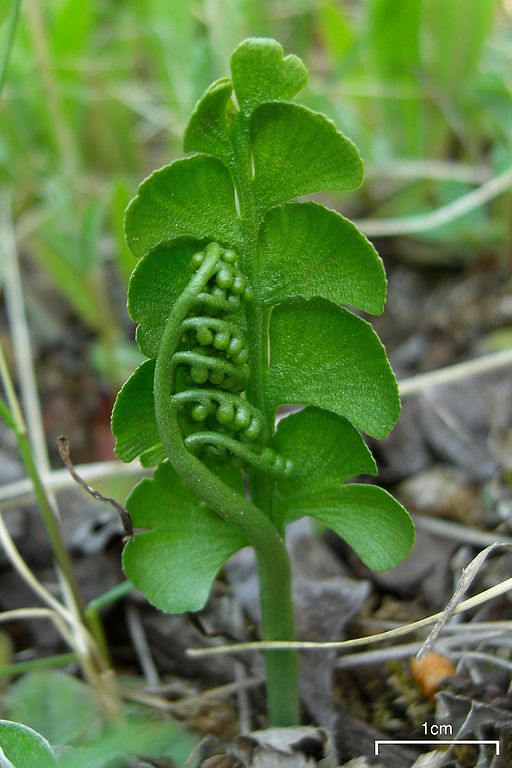 |   |  |   |   |
 |  |
Moonwort
is a perennial, small annual plant with a root and one leaf, 2-20 cm per year, divided approximately in the middle into 2 segments. The name of the plant is due to the appearance of the vegetative part of its leaf segment. The barren part is leathery, practically without a leaf stalk, elongated, tufted with almost oppositely arranged half-moon segments (3-8 pairs), glabrous, yellow-green in color. The spore-bearing segment is on a long stem (1-6cm), bisected or trisected, as a rule, a little longer than the barren part. Sporangia arranged in two rows. Spores ripen in June-July. After spore shedding, the leaf dies.
Fern roots are collected for medicinal purposes. It is done at the beginning of autumn. The rhizomes are cleaned from the soil and the dead parts of the plant, cut into pieces, dried in the shade or in forced dryers and even ovens. The indicative temperature is an average of 40C. The finished drug is stored for an average of 1 year in a tightly closed glass container. If a root browns during drying, it must be thrown away from the drug - the finished drug must be white.
The flavonoid quercetin and kaempferol, proteins, alkaloids, albaspidin, ferric acid and flavaspidic acid, nicotinic acid, filicin and aspadinol-ficilinic acid derivatives, vitamins C, E, A are found in the
Moonwort
. Carbohydrate trehalose is found in the leaves. The rhizomes contain tannins, glycosides, catechins, vegetable fats and essential oils.
Medicinal significance
Pharmacological properties are related to the biologically active substances present in the plant. Quercetin, kaempferol, flavonoids, trehalose, tannins, etc. The root of the bracken has a hemostatic and antiseptic effect. Eastern scholars found that this herb can also be valuable for treating wounds, burns, and ulcers, as well as for stopping uterine bleeding.
The toxic substances of
Moonwort
are ferric acid and ficilinic acid, which break down to form phlicin and aspadinol. These muscle poisons cause paralysis in various intestinal parasites. It can be used as an antihelminthic remedy.
In India, a decoction and infusion of this plant is used as a hemostatic agent, a decoction of the rhizomes is used to stop uterine bleeding.
In folk medicine, the leaves are used as an antiseptic and wound healing agent to treat wounds, burns, hernias, boils and other skin injuries. A decoction of the roots is used to stop uterine bleeding and also as an antihelminthic remedy. In Eastern countries, this plant is used as an antidote to snake bites.
